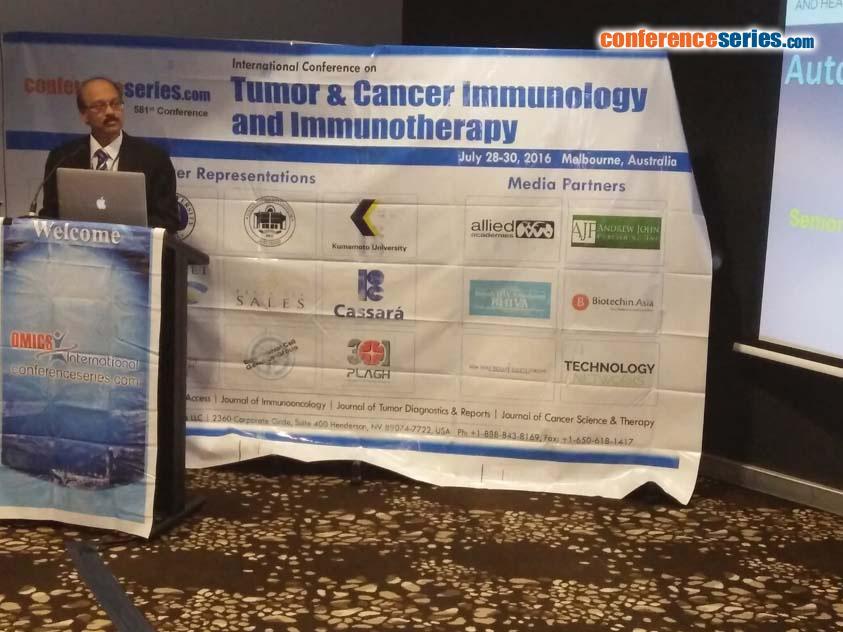
Nalini Kant Pati
Australian National University, Canberra, Australia
Title: Autoimmune disorders and Lymphoma
Biography
Biography: Nalini Kant Pati
Abstract
When autoimmunity began to emerge as a recognized disease process around 1950s, numerous studies linked several different autoimmune diseases with benign and malignant lympho-proliferative disorders in humans as well as animal models. Cuttner et al have investigated the relationship of prior autoimmune disease to the development of non-Hodgkin's lymphoma (NHL). Patients with NHL (n=278) seen during the 10 years period were compared with the controls, (n=317) seen at the same time. A comparison between these patient groups was performed based on various statistical analysis as well as logistic regression analysis to ascertain the risk of autoimmunity in NHL. 36 (13%) NHL patients had a prior autoimmune disease compared to 5% of controls (p=0.001). 69% of NHL patients with a prior autoimmune disease were female compared to 43% without a prior autoimmune disease and this was similar in control patients, 69% and 48%, respectively. 20% of all women with NHL had a history of autoimmune disease compared to 7% of women in the control group (p=0.001). 19 of the NHL patients with autoimmune disease (56%) received immunosuppressive treatment compared to 5 (38%) in the controls. Strength of association Existing clinical data on the autoimmunity-lymphoma association are rather meagre because many of the clinical studies have been anecdotal case collections rather than well studied prospective studies2. However, adequate studies establish strong associations between B cell lymphomas and Sjögren’s syndrome, autoimmune thyroiditis and autoimmune haemolytic anaemia. Apoptosis The role of defective apoptosis in the genesis of lymphoproliferation, autoimmunity and lymphoma was dramatically illustrated by the autoimmune lymphoproliferative syndrome (ALPS) of childhood. ALPS is the result of dominant heterozygous inheritance of a mutated (inactive) gene, (NIH), lymphoma occurred in 6 of 46 individuals, 13% of patients, usually long after the onset of ALPS at intervals from 6–48 years. Sustained antigen drive An example of such mechanism would be the chronic H. pylori infection that drives the host response, with T cell stimulation, ultimately generates an active lympho proliferating in B cell population. The ensuing MALT lymphoma will regress up to a certain point if H. pylori is eradicated. However, acquisition of particular chromosomal translocations among reactive B cells are lymphomogenic. Mutagenicity among B cells The third mechanism: B cell mutagenicity. Early B cell developmental events in the bone marrow operate to generate the B cell antigen receptor (BCR). Leading to further diversification of the BCR and developmwnt of lymphoproliferative disorder. Hodgkin’s disease: Personal history of autoimmune diseases is consistently associated with increased risk of non-Hodgkin’s lymphoma.6 Recent data also indicate that the risk of HL is increased following autoimmune diseases.7–9 Kristinsson et al, recently analyzed the association of a personal history of autoimmune conditions in 7,476 HL patients compared to 18,573 controls, and found several autoimmune conditions to be strongly associated with HL, including rheumatoid arthritis (RA), systemic lupus erythematosus (SLE), sarcoidosis, and immune thrombocytopenic purpura (ITP). It was found that an overall 2.7-fold increased risk for all systemic autoimmune diseases combined.
Speaker Presentations
Speaker PPTs Click Here




